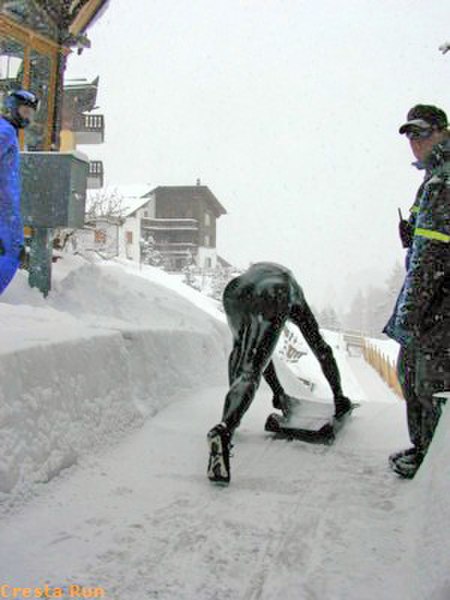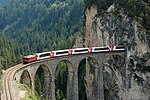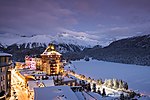Cresta Run

The Cresta Run is a natural ice skeleton racing toboggan track in eastern Switzerland. Located in the winter sports town of St. Moritz, the 1.2125 km (0.753 mi) run is one of the few in the world dedicated entirely to skeleton. It was built in 1884 near the hamlet of Cresta in the municipality of Celerina/Schlarigna by the Outdoor Amusement Committee of the Kulm Hotel and the people of St. Moritz. The committee members were Major William Henry Bulpett (founder of the St. Moritz Tobogganing Club (SMTC)), George Robertson, Charles Digby Jones (Robertson and Digby Jones planned the proposed course), C. Metcalfe, and J. Biddulph. It has continued as a partnership to this day between the SMTC, founded in 1887, and the people of St. Moritz. The sport of intramural sled racing originated in winter resort activities at the Kulm Hotel St. Moritz during the early 1870s. SMTC members still congregate for lunch in the 'Sunny Bar' at the Kulm. In the early days of competitive sledding, the predominant style was luge-style racing, lying on one's back, but the invention of the flexible runner sled (Flexible Flyer) in 1887, known colloquially as 'the America', led to Mr. Cornish using the head-first style in the 1887 Grand National. He finished fourteenth due to some erratic rides but established a trend, and by the 1890 Grand National all competitors were riding head-first. The head-first style for a time became known as 'Cresta' racing.
Excerpt from the Wikipedia article Cresta Run (License: CC BY-SA 3.0, Authors, Images).Cresta Run
Via Ruinatsch,
Geographical coordinates (GPS) Address Nearby Places Show on map
Geographical coordinates (GPS)
| Latitude | Longitude |
|---|---|
| N 46.5025749 ° | E 9.8450459 ° |
Address
Cresta Run Clubhouse
Via Ruinatsch 9
7500
Grisons, Switzerland
Open on Google Maps











